Unraveling Truth: The Impact of Multiple Perspectives in Film Storytelling
Unraveling Truth: The Impact of Multiple Perspectives in Film Storytelling
Film has always been a powerful medium for storytelling, capable of transporting audiences into diverse worlds and experiences. At its core, the magic of cinema lies in its ability to present narratives through a multitude of lenses, inviting viewers to engage with characters and plots from various angles.
In this blog post, we will delve into the fascinating realm of multiple perspectives in film storytelling, exploring how different viewpoints can enhance the richness of a narrative, challenge our perceptions, and evoke deeper emotional responses.
From classic ensemble casts to innovative non-linear narratives, we will examine the techniques filmmakers use to weave complex tapestries of truth, allowing us to see the world through the eyes of others.
Join us as we unravel the intricate layers of storytelling that redefine our understanding of truth in cinema and celebrate the art of perspective.
1. Introduction to the Concept of Multiple Perspectives
In the realm of film storytelling, the concept of multiple perspectives has emerged as a dynamic and enriching narrative device, inviting audiences to engage with stories in profound and varied ways.
At its core, multiple perspectives involve presenting a single event or theme through the eyes of different characters, each offering their unique insights, motivations, and emotional responses.
This multifaceted approach not only deepens character development but also challenges the audience’s understanding of truth and reality within the narrative.
Consider a film where a pivotal event—a car accident, for instance—is depicted from the viewpoints of different witnesses. Each character’s interpretation of the incident is colored by their personal biases, histories, and relationships, creating a tapestry of conflicting narratives that compels viewers to ponder the nature of truth itself.
This technique allows filmmakers to explore complex themes such as morality, perception, and the human experience, ultimately enriching the storytelling landscape.
Moreover, the use of multiple perspectives can foster empathy among audiences, as they are invited to step into the shoes of diverse characters, each with their own struggles and desires.

By weaving together these varied viewpoints, filmmakers can create a more immersive experience that resonates on an emotional level, encouraging viewers to reflect on their preconceived notions and the subjectivity of their own experiences.
As we delve deeper into the impact of this storytelling approach, we will uncover how it not only enhances narrative depth but also transforms the way we connect with the stories we watch.
Unraveling Truth: The Impact of Multiple Perspectives in Film Storytelling
2. The Importance of Perspective in Storytelling
The importance of perspective in storytelling cannot be overstated; it serves as the lens through which audiences engage with a narrative, shaping their understanding and emotional connection to the characters and events unfolding on screen.
In film, perspective dictates not just who tells the story, but how it is told, influencing everything from plot development to thematic depth.
When a story is presented through a single perspective, viewers experience a curated version of reality—one that may be rich in detail but also inherently limited.
Consider films like “A Beautiful Mind,” where the audience is invited to experience the world through the eyes of John Nash, a brilliant mathematician grappling with schizophrenia. This singular viewpoint allows for a deep emotional resonance, yet it also conceals the broader context and experiences of those around him.
In contrast, films that employ multiple perspectives, such as “Rashomon” or “Vantage Point,” provide a multifaceted understanding of the same events. Each character’s viewpoint unveils different motivations, emotions, and truths, encouraging viewers to question the reliability of each perspective.
This narrative technique not only enriches the storytelling but also fosters critical thinking, as audiences are challenged to piece together the puzzle of truth amidst subjective interpretations.
Moreover, varying perspectives can evoke empathy, allowing viewers to step into the shoes of characters they might not ordinarily relate to.
By showcasing the complexity of human experience—how different backgrounds, beliefs, and circumstances shape one’s actions—films can illuminate the intricacies of conflict and resolution, driving home the message that truth is often not a singular entity but a tapestry woven from many threads.
In essence, the use of perspective in film storytelling is not just a stylistic choice; it is a powerful tool that enhances narrative depth, provokes thought, and ultimately transforms the way audiences perceive and relate to the stories being told.
Unraveling Truth: The Impact of Multiple Perspectives in Film Storytelling
By embracing multiple viewpoints, filmmakers can create richer, more engaging narratives that resonate on a deeper level, inviting viewers to explore the many layers of human experience.
3. Authentic Setting: Numerous Viewpoints in Cinema
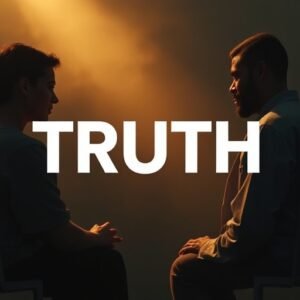
The investigation of numerous points of view in cinema is profoundly established in the chronicled setting of filmmaking, reflecting broader societal changes and the advancement of story methods.
From the early days of noiseless movies to the sprawling accounts of modern cinema, producers have persistently looked for to show stories through differing focal points, enhancing the viewer’s involvement and understanding of the narrative.
In the noiseless film time, executives like D.W. Griffith tested with changing points and altering procedures, laying the foundation for narrating that risen above the restrictions of exchange.
In any case, it wasn’t until the mid-20th century that the concept of different points of view really started to prosper, paralleling noteworthy social shifts and the rise of modern waves in cinema.
The French Unused Wave, for occurrence, presented a radical takeoff from conventional narrating, emphasizing subjective encounters and individual stories. Movies like Jean-Luc Godard’s “Breathless” and François Truffaut’s “The 400 Blows” showcased how a story may be told through the divided focal points of diverse characters, permitting groups of onlookers to witness occasions from clashing perspectives.
This approach not as it were highlighted the complexity of human involvement but too welcomed watchers to lock in fundamentally with the account, addressing the unwavering quality of each character’s perspective.
As cinema advanced into the late 20th and early 21st centuries, producers started to saddle the control of numerous points of view to handle social issues, authentic occasions, and individual shows. Works like “Mash Fiction” by Quentin Tarantino and “Rashomon” by Akira Kurosawa magnificently outline how the same occasion can be seen in unfathomably diverse ways, underscoring the subjectivity of truth.
These movies challenge gatherings of people to consider the suggestions of predisposition, memory, and setting, reminding us that our understanding of any given circumstance is regularly colored by our person experiences.
Today, with the coming of innovation and the openness of narrating stages, producers are more engaged than ever to investigate shifted viewpoints. Spilling administrations and free movies have opened entryways for voices that were already marginalized, improving the cinematic scene with stories that reflect a huge number of encounters.
This commitment to different narrating not as it were improves the account profundity but too cultivates sympathy and understanding among gatherings of people, making the affect of different viewpoints in film narrating both significant and trans-formative.
By looking at the authentic setting of these advancements, we pick up knowledge into the progressing advancement of cinema and its potential to reflect the multifaceted nature of human experience.
4. Examining Key Movies that Utilize Numerous Perspectives
To genuinely get a handle on the control of numerous points of view in film narrating, we must jump profound into a few key movies that have unbelievably utilized this strategy. These movies not as it were engage but too incite thought, challenge discernments, and welcome gatherings of people into a nuanced understanding of their narratives.
One Rashomon ( 1950) made by Akira Kurosawa. This classic film revolutionized narrating by displaying the same occasion through the eyes of four diverse characters, each advertising their claim particular adaptation of the truth. The result is a layered story that compels watchers to address the exceptionally nature of reality and the unwavering quality of memory. Kurosawa’s inventive approach serves as a foundational think about in the investigation of subjective truth and ethical uncertainty, displaying how person viewpoints can shape an whole story.
Unraveling Truth: The Impact of Multiple Perspectives in Film Storytelling
Another film is ” Vantage Point” (2008).
This thriller unfurls a single death endeavor from a few distinctive vantage focuses, each uncovering unused data and modifying the audience’s understanding of the plot. By utilizing this structure, the producers make a tense climate that not as it were increases anticipation but too emphasizes the complexity of truth in chaotic circumstances. Each viewpoint builds upon the final, driving to a climax where all pieces of the perplex come together in a exciting reveal.

**”The Regular Suspects”** (1995) is however another compelling case where numerous points of view play a pivotal part in the account. The film’s hero, Verbal Kint, describes a convoluted story including a heist and a puzzling wrongdoing master. As the account unfurls, watchers are driven to address the genuineness of Verbal’s adaptation, making an locks in interaction between truth and double dealing. The turn finishing recontextualizes everything that has come some time recently, displaying how viewpoint can control the audience’s desires and understanding.
Lastly, we can see at **”Cloud Map book”** (2012), a film that ranges different timelines and interweaves the stories of different characters over centuries. By exhibiting how person activities reverberate through time, the film emphasizes the interconnecting of humankind and the affect of our choices. Each fragment, told from distinctive viewpoints, contributes to a bigger commentary on destiny, free will, and the ethical complexities of existence.
These movies represent the control of numerous points of view in improving narrating. By permitting gatherings of people to see occasions through shifted focal points, they not as it were upgrade story profundity but moreover cultivate a more significant passionate association. As producers proceed to investigate this procedure, it gets to be clear that the craftsmanship of narrating is not only almost the story itself, but approximately the different ways in which that story can be seen and deciphered.
5. The Role of Narrative Structure in Perspective-Shifting
The role of narrative structure in perspective-shifting is a crucial element that enhances the depth and richness of storytelling in film. When filmmakers employ a non-linear narrative or multiple story arcs, they invite audiences to engage with the material on a more intricate level. This structural choice allows for the exploration of contrasting viewpoints, often revealing the complexities of character motivations and the nuances of their interactions.
For instance, films like “Pulp Fiction” or “21 Grams” utilize a fragmented narrative that shifts between different characters and timelines, compelling the viewer to piece together the story from various angles. This disjointed structure not only maintains suspense but also encourages the audience to reconsider their assumptions about each character’s role and significance within the larger narrative.
As the viewer toggles between perspectives, they are challenged to empathize with characters they might initially judge harshly, fostering a more profound understanding of their actions and choices.
Moreover, the strategic use of unreliable narrators can further complicate the narrative structure. When a character’s account of events is revealed to be skewed or deceptive, it prompts the audience to question the authenticity of the presented information. Films like “Fight Club” masterfully employ this technique, leading viewers down a path of self-discovery as they unravel the truth behind the protagonist’s fragmented psyche.
Ultimately, the way a story is structured plays a significant role in how perspectives shift and intertwine, creating a rich tapestry of narrative threads. This complexity not only keeps audiences captivated but also elevates the film from mere entertainment to a thought-provoking exploration of human experience, memory, and truth.
As filmmakers continue to experiment with narrative forms, the impact of perspective-shifting will remain a vital tool in crafting compelling stories that resonate deeply with viewers.
6. Character Development Through Different Lenses
Character development through different lenses creates a rich tapestry that adds depth and nuance to storytelling. When filmmakers choose to present a character from multiple perspectives, they invite the audience to experience the intricacies of human nature in a way that is often more reflective of real life. This technique not only enhances the narrative but also fosters a deeper emotional connection with the audience.
Consider films like “Rashomon” or “Vantage Point,” where the same events are recounted through the eyes of different characters, each offering unique interpretations shaped by their backgrounds, motivations, and biases. This multifaceted approach allows viewers to see how perception can alter reality, ultimately leading to a more profound understanding of the characters themselves.
As we delve into each lens, we uncover the motivations and vulnerabilities that define these individuals, illustrating how circumstances and personal histories can shape behavior and choices.
Moreover, this method of storytelling can challenge viewers’ preconceived notions and biases. For instance, a character initially seen as a villain may be portrayed in a more sympathetic light when viewed through the eyes of a loved one or a stranger. This shift not only complicates the character’s arc but also prompts the audience to reassess their own judgments, fostering a more empathetic response.
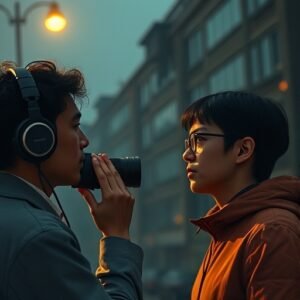
Incorporating multiple perspectives also opens the door for themes of reliability and truth. As the audience navigates through the conflicting narratives, they are prompted to question what constitutes truth in storytelling. This layered approach not only enriches the characters but also engages the audience on an intellectual level, prompting discussions about morality, perception, and the human experience.
Ultimately, character development through different lenses is a powerful tool in film storytelling. It transforms static characters into dynamic individuals, encourages empathy, and challenges the audience to embrace complexity. By exploring the multifaceted nature of characters, filmmakers can create compelling narratives that resonate deeply and linger long after the credits roll.
7. Audience Engagement: How Perspectives Shape Perception
In the realm of film storytelling, audience engagement is intricately woven with the perspectives presented throughout the narrative. When filmmakers employ multiple viewpoints, they create a rich tapestry of interpretation that invites viewers to immerse themselves in the story on a deeper level. Each perspective acts as a unique lens, highlighting different facets of the plot and character motivations, which can significantly shape audience perception.
Consider films that utilize unreliable narrators or fractured timelines; these techniques compel viewers to actively piece together the truth from conflicting accounts. Take “Rashomon,” for example, where the same incident is recounted through the eyes of different characters, each with their own biases and agendas.
This narrative structure not only engages the audience but also challenges them to question the reliability of each perspective, ultimately inviting them to form their own conclusions.
Moreover, the emotional resonance of a story is often amplified through the diverse experiences of its characters. By showcasing varying perspectives, filmmakers can evoke empathy and understanding, allowing viewers to connect with characters on multiple levels. For instance, in ensemble films like “Love Actually,” the intertwining lives of various characters provide insight into different forms of love and relationships, enriching the overall narrative and fostering a sense of community among the audience.
In essence, the manipulation of perspective in film is not merely a storytelling device; it is a powerful tool that shapes how audiences perceive and engage with the narrative. By inviting viewers to explore the story from multiple angles, filmmakers can create a more dynamic, interactive experience that resonates long after the credits roll.
Unraveling Truth: The Impact of Multiple Perspectives in Film Storytelling
The result is a profound exploration of truth, perception, and the complex nature of human experience, encouraging audiences to reflect on their own views and biases as they journey through the cinematic landscape.
8. The Emotional Impact of Seeing the Same Event Differently
The emotional impact of seeing the same event differently can be profound, transforming a narrative into a rich tapestry of human experience. When filmmakers choose to present a story from multiple perspectives, they invite the audience to engage on a deeper level, fostering empathy and understanding in ways that a singular viewpoint simply cannot achieve.
Imagine a scene where a tragic accident unfolds. From one character’s perspective, the event is a moment of panic and chaos, filled with a rush of adrenaline and fear. Another character might view it through the lens of guilt, burdened by the belief that their actions led to the catastrophe.
Meanwhile, a third character could experience the event with a sense of detachment, as they are merely a bystander caught in the crossfire of fate. Each interpretation not only alters the audience’s emotional response but also expands the thematic richness of the story.
This multifaceted approach allows viewers to witness the complexity of human emotions and the nuances of relationships. It compels them to reflect on their own biases and assumptions, illustrating how individual experiences shape perceptions. By layering these differing viewpoints, filmmakers can create a more immersive narrative that resonates with audiences long after the credits roll.
Consider films like “Rashomon” or “Vantage Point,” where the same event is revisited through the eyes of different characters. Each perspective sheds new light on the central truth, demonstrating that our understanding of reality is often fragmented and subjective. This technique not only enhances the storytelling but also evokes a sense of curiosity and introspection, urging viewers to question their own interpretations of events in their lives.
In the end, the emotional impact of seeing the same event differently enriches the cinematic experience, reminding us of the complexity of human nature and the myriad ways we can connect with one another through shared stories.
9. Techniques Filmmakers Use to Convey Multiple Perspectives
Filmmakers employ a rich tapestry of techniques to convey multiple perspectives, transforming a single narrative into a multifaceted exploration of truth and experience. One of the most effective approaches is the use of **non-linear storytelling**, where the plot unfolds out of chronological order.
This technique allows audiences to piece together events from various angles, creating a more immersive understanding of characters’ motivations and experiences. Films like *Pulp Fiction* and *Memento* exemplify this method, as they demand active engagement from viewers who must navigate the intricate web of timelines and perspectives.
**Point-of-view shots** are another powerful tool in the filmmaker’s arsenal. By placing the camera in a character’s position, directors enable audiences to experience the world through that character’s eyes, fostering empathy and a deeper connection to their emotional journey.
This technique is effectively employed in films such as *The Diving Bell and the Butterfly*, where the audience not only witnesses the protagonist’s struggles but also feels the weight of his limitations.

**Dialogue and character interactions** also play a crucial role in revealing multiple perspectives. Through cleverly crafted conversations, filmmakers can juxtapose differing viewpoints, offering insight into the characters’ beliefs and motivations. Films like *12 Angry Men* showcase how dialogue can be a battleground for contrasting ideologies, with each character presenting their unique perspective while simultaneously reflecting the societal context in which they exist.
Moreover, **symbolism and visual motifs** can subtly convey the nuances of multiple perspectives. A recurring image or theme can take on different meanings depending on the character’s viewpoint, enriching the narrative and encouraging deeper analysis. In *Pan’s Labyrinth*, the juxtaposition of the brutal reality of post-Civil War Spain against the fantastical world of the labyrinth serves as a powerful metaphor for the various ways individuals cope with trauma and oppression.
Finally, filmmakers often utilize **sound design and score** to enhance the emotional weight of different perspectives. Music and ambient sounds can shift the tone of a scene, guiding the audience’s emotional response and highlighting the subjective experience of each character. A tense score can amplify a character’s fear, while a soothing melody can evoke comfort and safety, showcasing how perspective can shape emotional reality.
By blending these techniques, filmmakers create a rich, layered storytelling experience that invites viewers to explore the complexity of human experience, challenging them to consider the world through a multitude of lenses. In doing so, they not only enhance the narrative but also foster empathy, understanding, and a deeper appreciation for the diverse tapestry of life.
10. Case Study: Comparing Films with Single vs. Multiple Perspectives
To truly understand the power of perspective in film storytelling, we can look at two contrasting films: *The Shawshank Redemption* and *Rashomon*. Both are celebrated for their storytelling techniques, yet they approach perspective in strikingly different ways.
*The Shawshank Redemption*, based on a novella by Stephen King, employs a singular perspective through the eyes of Andy Dufresne, a man wrongfully imprisoned for murder. The audience experiences his journey of resilience and hope as he navigates the harsh realities of Shawshank Prison.
This single viewpoint creates a deeply personal connection between Andy and the viewer, allowing us to invest emotionally in his struggles and triumphs. As we follow his evolution from a desperate inmate to a mastermind of escape, we are invited to share in his internal monologues, his quiet reflections, and ultimately, his quest for freedom.
This focused lens fosters a narrative that is both intimate and immersive, guiding our sympathies and shaping our understanding of justice and redemption.
In stark contrast, Akira Kurosawa’s *Rashomon* presents a narrative that embraces multiple perspectives to explore the complexities of truth and human nature. The film recounts a violent incident from the viewpoints of four different characters, each offering a distinct interpretation of the events.
This narrative structure challenges the audience to grapple with the concept of subjective truth. As each character provides their version of what transpired, we are left questioning the reliability of memory and the motivations behind each retelling. The interplay of perspectives not only enriches the storytelling but also invites viewers to reflect on their biases and assumptions.
Through this method, *Rashomon* reveals the multifaceted nature of reality, compelling us to confront the idea that truth can be elusive, shaped by personal experience and perception.
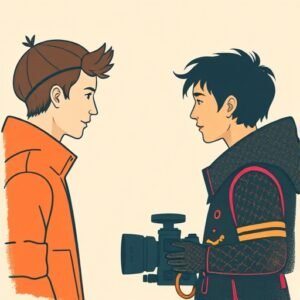
By comparing these two films, we see how storytelling can be profoundly altered by the choice of perspective. While *The Shawshank Redemption* uses a focused lens to build a strong emotional connection, *Rashomon* employs a kaleidoscope of viewpoints to provoke thought and discussion about the nature of truth.
Each approach has its own merits, highlighting the impact that perspective can have on audience engagement and thematic depth. In the realm of film storytelling, the decision to embrace a single viewpoint versus multiple perspectives can define not only the narrative structure but also the emotional resonance and intellectual engagement of the viewer.
11. Challenges of Writing and Directing with Multiple Viewpoints
Writing and directing a film with multiple viewpoints presents a unique set of challenges that can test even the most seasoned storytellers. First and foremost, maintaining a coherent narrative becomes a critical task. With various characters offering their interpretations of events, it’s essential to weave their stories together in a way that feels both authentic and cohesive.
Screenwriters must carefully craft each perspective, ensuring that the characters’ voices are distinct yet complementary, allowing the audience to engage with each viewpoint without becoming disoriented.
Moreover, pacing can become a significant hurdle. Each character’s perspective requires time to develop, and balancing this with the overall flow of the story is no small feat. Too much focus on one viewpoint may leave audiences feeling disconnected from others, while rapid shifts can create confusion.
Directors must find the rhythm that allows each perspective to shine, often relying on visual cues or thematic elements to guide the audience through these transitions seamlessly.
Additionally, the emotional weight of each viewpoint must be handled delicately. Each character brings their own biases, experiences, and emotions to the table, which can lead to conflicting narratives that challenge the audience’s perceptions. Writers and directors must navigate these complexities, ensuring that each perspective is treated with respect and depth, allowing viewers to empathize with characters even when their motives clash.
Finally, there’s the risk of diluting the story’s central message. With multiple viewpoints, it’s easy for the core theme to become muddled or lost amid the myriad voices. Creators must remain vigilant, continually asking themselves how each perspective ties back to the overall narrative.
By honing in on the thematic threads that link these viewpoints, filmmakers can enrich their stories, transforming what could be a chaotic interplay of opinions into a powerful exploration of truth, perception, and human experience. Balancing these challenges ultimately leads to a richer, more nuanced film that invites audiences to reflect on the multifaceted nature of storytelling itself.
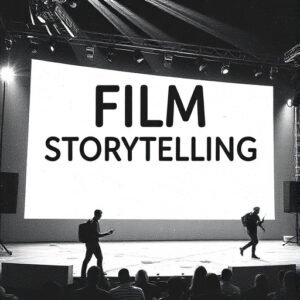
12. The Future of Perspective in Film Storytelling
As we stand on the cusp of a new era in cinema, the future of perspective in film storytelling appears both thrilling and transformative. The rapid advancements in technology, coupled with an evolving audience landscape, are reshaping how stories are crafted and experienced on screen.
Filmmakers are increasingly leveraging innovative techniques, such as virtual reality and interactive narratives, to immerse viewers in a multi-faceted storytelling experience that transcends traditional linear formats.
One of the most profound shifts is the growing emphasis on diverse narratives and underrepresented voices. Audiences are demanding more authenticity and inclusivity in storytelling, prompting creators to explore perspectives that were once sidelined.
This evolution not only enriches the cinematic tapestry but also fosters empathy and understanding among viewers, as they are invited to step into the shoes of characters from varied backgrounds and experiences.
Moreover, the rise of streaming platforms has paved the way for experimental storytelling. Filmmakers now have the freedom to play with non-linear narratives and multiple points of view, allowing audiences to piece together stories in a more active and engaging manner. This shift encourages viewers to question their own perceptions and biases, making for a more profound cinematic experience.
As we look ahead, it’s clear that the potential for perspective in film storytelling is boundless. The challenge for filmmakers will be to not only harness these new tools but also to maintain the emotional core of their narratives. With each new project, they have the opportunity to push boundaries, challenge conventions, and invite audiences to see the world through a kaleidoscope of viewpoints.
Unraveling Truth: The Impact of Multiple Perspectives in Film Storytelling
In this dynamic landscape, the future of film storytelling is not just about what stories are told, but how they are told and experienced, promising a richer, more nuanced journey for all who dare to watch.
13. Conclusion: The Value of Embracing Diverse Perspectives in Cinema
In conclusion, embracing diverse perspectives in cinema is not merely a trend; it is a transformative approach that enriches storytelling and deepens audience engagement. As we have seen throughout this exploration, films that incorporate multiple viewpoints invite viewers to step outside their own experiences, fostering empathy and understanding. This is particularly crucial in a world that often feels divided, where art can serve as a bridge connecting disparate cultures and ideas.
When filmmakers choose to present narratives from various angles—whether through character arcs, plot structures, or visual styles they create a tapestry of human experience that resonates on multiple levels. This multiplicity not only enhances the richness of the story but also reflects the complexity of real life, where no single truth can encompass the entirety of an issue.
Films like “The Hate U Give,” “Parasite,” and “Birdman” exemplify how layered narratives can provoke thought, challenge societal norms, and inspire dialogue among audiences.
Moreover, from a commercial perspective, films that celebrate diversity often find broader appeal, tapping into the collective consciousness of an increasingly globalized audience. By championing varied voices and experiences, filmmakers not only honor the richness of human life but also ensure that cinema continues to evolve as a medium that celebrates inclusivity.
As we look to the future of film, let us champion the value of embracing diverse perspectives. The impact is profound: a more empathetic audience, a more vibrant industry, and ultimately, a more connected society.
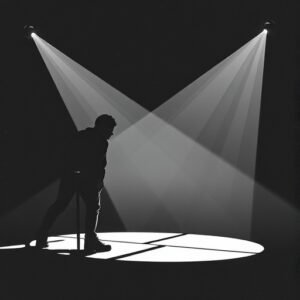
14. Further Reading and Viewing Recommendations
To delve deeper into the fascinating interplay of multiple perspectives in film storytelling, a wealth of resources awaits both cinephiles and casual viewers alike. These recommendations will not only enhance your understanding but also provide a broader context for appreciating how diverse viewpoints enrich narratives.
Films :
1. Rashomon (1950) – Akira Kurosawa’s groundbreaking film is a quintessential example of multiple perspectives, presenting the same event through the eyes of four different characters, each with their own biases and interpretations.
2. Vantage Point (2008) – This thriller employs a unique narrative structure that revisits a single event from various characters’ viewpoints, demonstrating how perspective can alter the understanding of truth.
3. The Usual Suspects (1995) – A masterclass in unreliable narration, this film challenges viewers to piece together the truth as it unfolds through differing accounts of the same crime.
4. Wild Tales (2014) – This Argentine anthology film presents six standalone stories that explore vengeance and morality from different angles, highlighting how perspective can shape our reactions to similar themes.
Documentaries :
1. The Act of Killing (2012) – This powerful documentary invites former Indonesian death squad leaders to reenact their real-life atrocities, offering a chilling exploration of perspective and historical narrative.
2. 13th (2016) – Ava DuVernay’s acclaimed documentary examines the intersection of race, justice, and mass incarceration in the United States, utilizing multiple voices and perspectives to present a comprehensive view of systemic issues.
By engaging with these texts and films, you will not only gain a deeper appreciation for the art of storytelling but also understand how multiple perspectives can illuminate the complexities of human experience, ultimately enriching our viewing experience. Whether you’re a filmmaker, a writer, or simply a passionate moviegoer, these resources will inspire you to explore the myriad ways perspectives can shape narratives and influence our understanding of truth.
15. Engaging the Audience: Inviting Discussion on Personal Perspectives in Film
Engaging the audience is a powerful tool in film storytelling, particularly when it comes to exploring multiple perspectives. Inviting viewers to share their personal interpretations not only enriches the cinematic experience but also creates a sense of community around the film. This dynamic interaction transforms passive viewers into active participants, fostering deeper connections with the story and its characters.
To encourage discussion, filmmakers and distributors can leverage social media platforms, host community screenings, or even create dedicated forums where fans can share their thoughts. By posing open-ended questions related to character motivations, thematic elements, or moral dilemmas presented in the film, creators can spark insightful conversations.
For instance, asking viewers how they would react in a similar situation to a character can lead to varying and unexpected responses, revealing the diverse values and beliefs held by the audience.
Moreover, engaging with critics and film enthusiasts can provide a broader spectrum of viewpoints. Featuring Q&A sessions with cast and crew, or hosting panel discussions with film scholars, allows for an exploration of the film’s multiple layers. This not only elevates the viewing experience but also empowers audiences to see themselves reflected in the narrative, ultimately enhancing their emotional investment.
As filmmakers embrace this interactive approach, they not only honor the complexity of storytelling but also acknowledge the unique perspectives each viewer brings to the table. By inviting discussion and valuing personal interpretations, films can resonate on a deeper level, creating an enduring impact that transcends the screen.
In conclusion, the exploration of multiple perspectives in film storytelling not only enriches the narrative but also deepens our emotional connection to the characters and themes. By skilfully weaving together diverse viewpoints, filmmakers invite audiences to engage in a more nuanced understanding of the story, prompting us to consider the complexities of human experience. As we continue to unravel the truth in cinema, we are reminded of the power of storytelling to bridge gaps, challenge assumptions, and foster empathy.
Unraveling Truth: The Impact of Multiple Perspectives in Film Storytelling
We hope this discussion inspires you to seek out films that embrace multiple perspectives and prompts you to view stories through a more expansive lens. After all, in the world of cinema, the truth is often a mosaic, beautifully pieced together from the voices and experiences of many.


